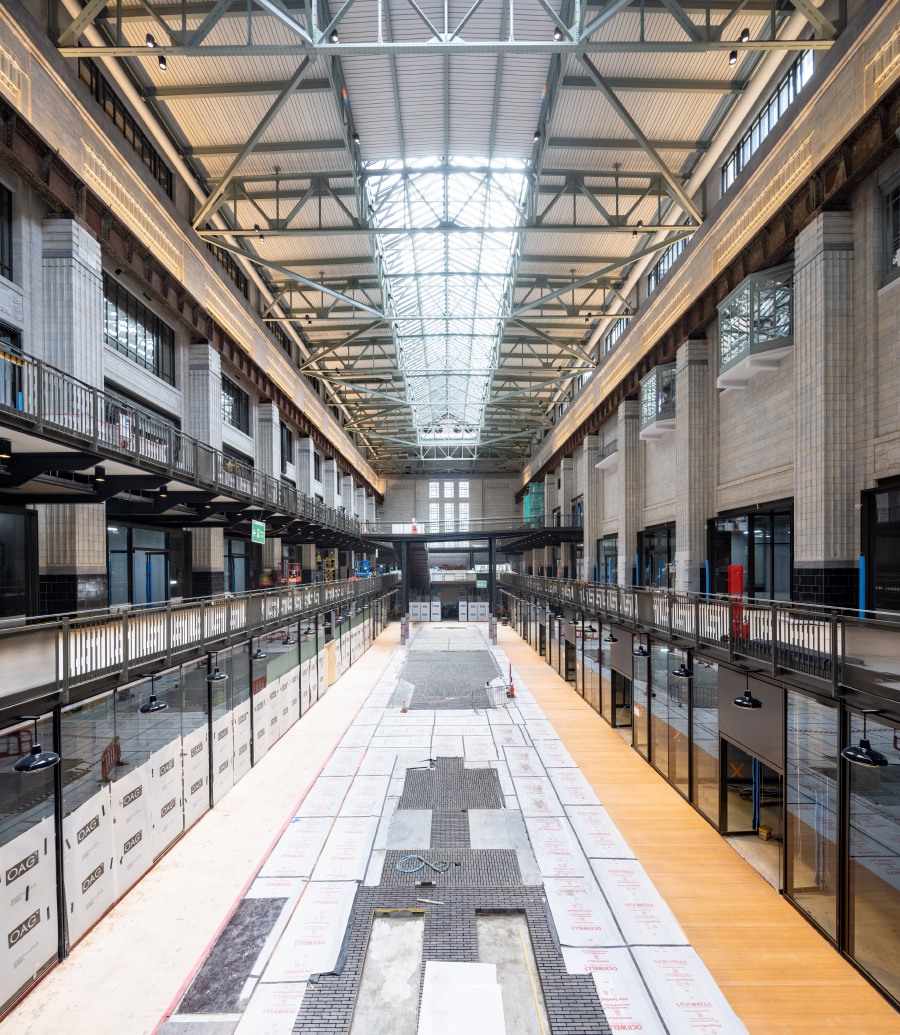By Sharen Kaur - Published in NST Property, July 13, 2022

sharen@nst.com.my
After eight years of careful and transformational restoration of the historic building, the £9 billion Battersea Power Station regeneration project has reached practical completion.
According to Simon Murphy, chief executive officer of Battersea Power Station Development Co (BPSDC), this is a significant milestone as the globally renowned landmark prepares to open to the public this autumn.
"On behalf of the shareholders, Sime Darby Property, S P Setia, and the Employees' Provident Fund, together with PNB (Permodalan Nasional Bhd), we are proud to announce the practical completion of the main build of Battersea Power Station, creating a new destination for all to live, work, eat and play. This is the culmination of nearly eight years of painstaking restoration work, transforming this former derelict building into a World-class destination to be enjoyed for generations."
He said the company is now working with retail and leisure brands to fit out their spaces in preparation for the building's opening.
Originally designed by Sir Giles Gilbert Scott, Battersea Power Station was built in two stages that form a seamless and nearly symmetrical whole on the outside but are designed in two distinct styles on the inside.
Battersea A, completed in 1935, is in the Art Deco style, whereas Battersea B, completed in 1955, reflects postwar austerity with its utilitarian industrial design.

Battersea Power Station recently unveiled decorative flooring in the Turbine Halls that provide "ghosts" of the historic turbines to commemorate this significant milestone and to celebrate the building's history. They supplied a fifth of London's electricity at their peak, including some of the capital's most recognisable addresses such as Buckingham Palace and the Houses of Parliament.
The power station was decommissioned completely in 1983.
The outline shapes of these structures in their original locations are stencilled into the flooring of the Turbine Halls of the Power Station, which now house over 100 shops, bars, and restaurants open to the public.
The Grade II* listed building also houses 254 apartments, over 500,000 square feet of office space, and one-of-a-kind events and leisure offerings, such as the chimney lift experience, which will take visitors 109 metres up to the top of the Power Station's northwest chimney, offering stunning 360-degree views of London's skyline.
Craftsmanship and suppliers have been sourced from all over the country as part of the Power Station's restoration, providing a significant boost to the UK economy.
Thousands of jobs have been created in the construction and design industries as a result of the restoration of the building, and over 2,500 jobs will be created once the Power Station is open to the public.
Extensive and highly skilled conservation work has been carried out throughout the Power Station to preserve and enhance its historic features, in collaboration with lead architect WilkinsonEyre, construction managers Mace Group, and Historic England. This includes the building's four iconic chimneys, which were deemed unsafe after extensive surveys and were painstakingly rebuilt using the original construction method.
Over 25,000 wheelbarrows of concrete were manually poured into shuttered layers and left to set one by one. Original paint samples were also taken and meticulously colour-matched to determine the type of paint used, with each chimney requiring 375 litres.
To match the originals, about 1.75 million handmade bricks were ordered from the two original British brickmakers who supplied the bricks used to build Battersea Power Station.
Northcot Brick, based in Gloucestershire, produced 1.3 million bricks to restore parts of the Power Station built in the 1930s and 1940s, while Blockleys, based in Telford, Shropshire, supplied 440,000 bricks to refurbish the final parts of the building built in the 1950s.
Meanwhile, Electric Boulevard, London's newest pedestrianised high street, will open this year, designed by Gehry Partners and Foster + Partners.
The high street will include shops, restaurants, a community hub, a new park, and a 164-room art'otel, the brand's first hotel in the UK, with views of the Power Station.
No comments:
Post a Comment